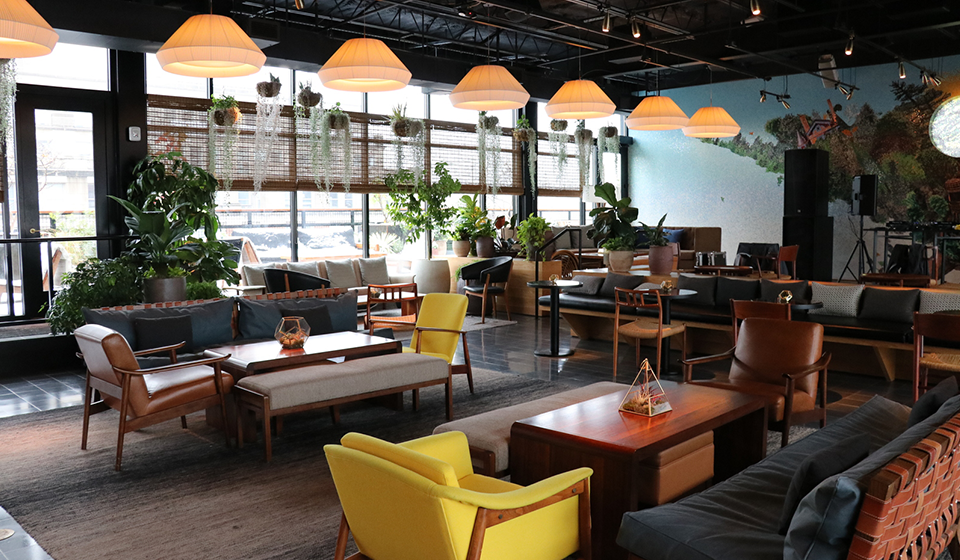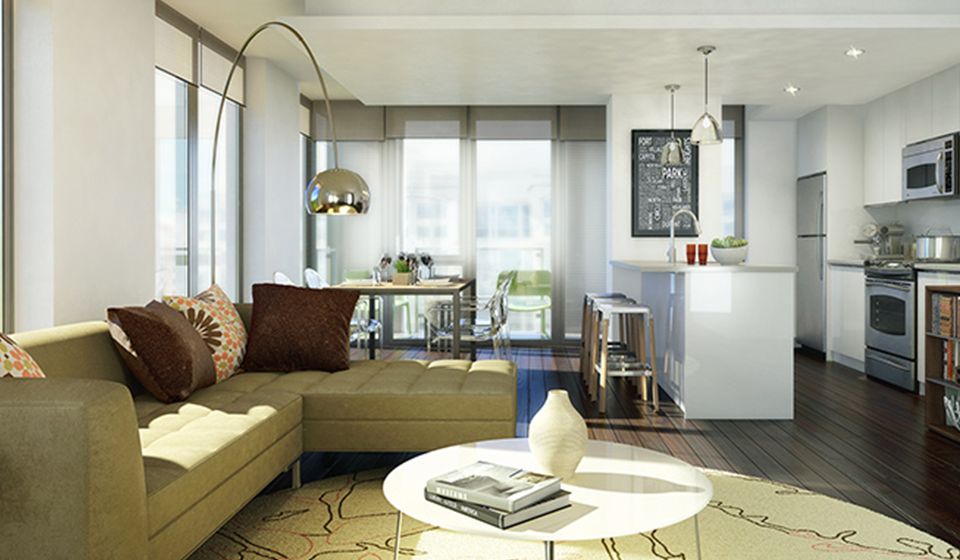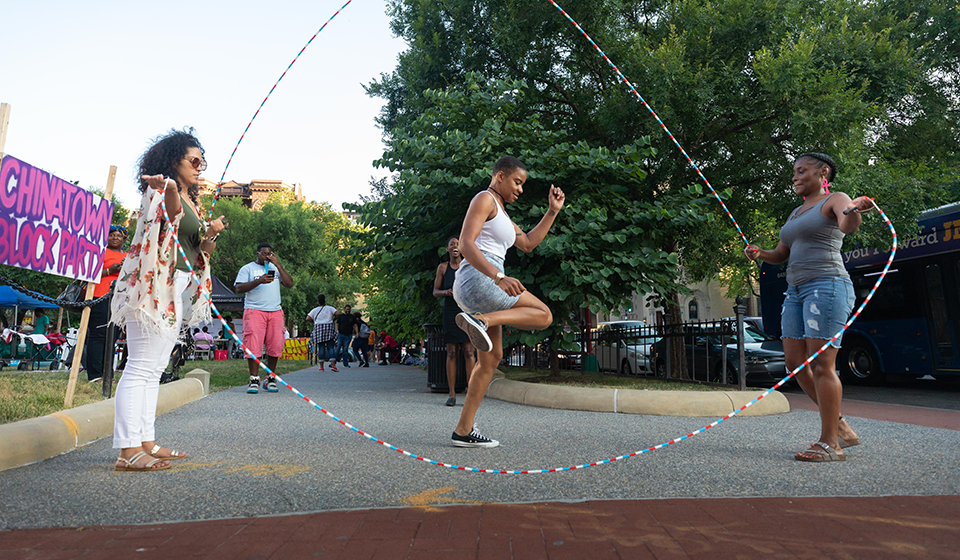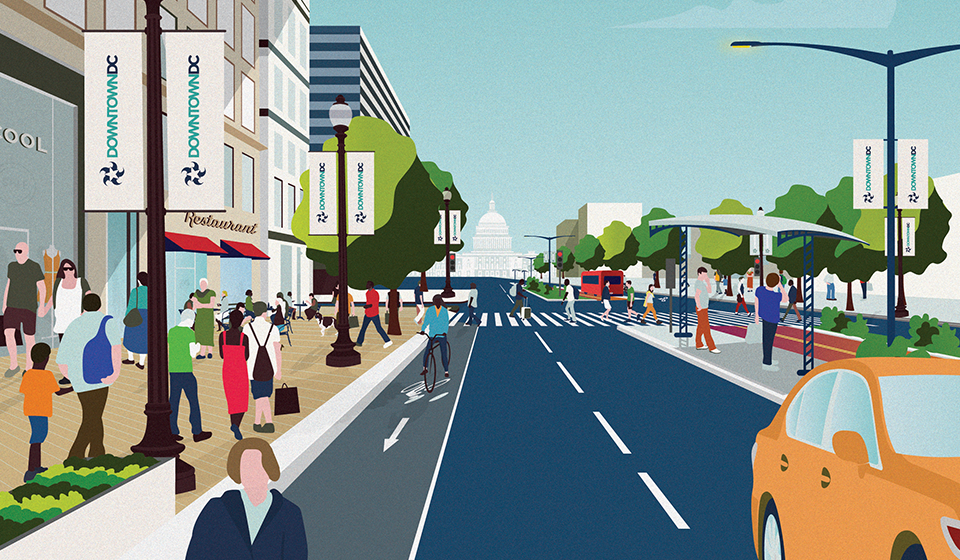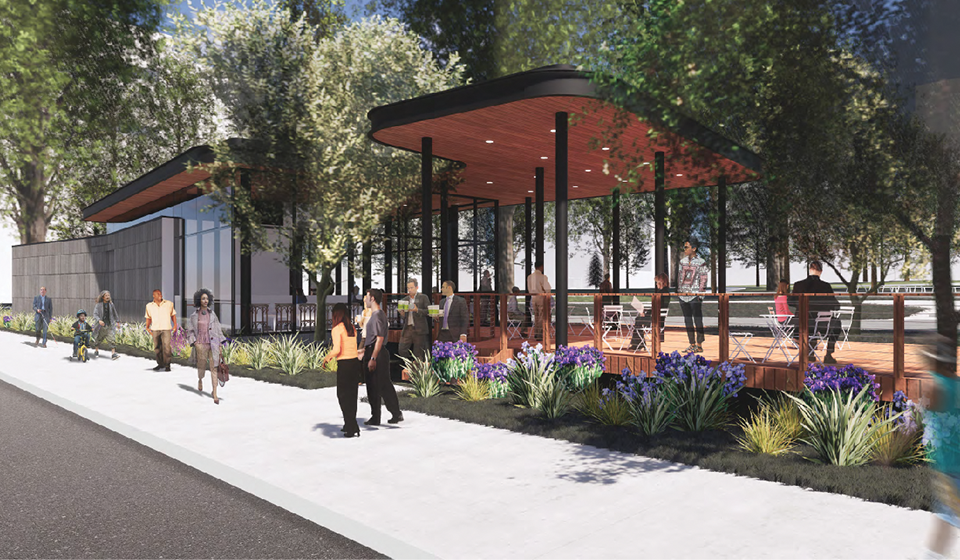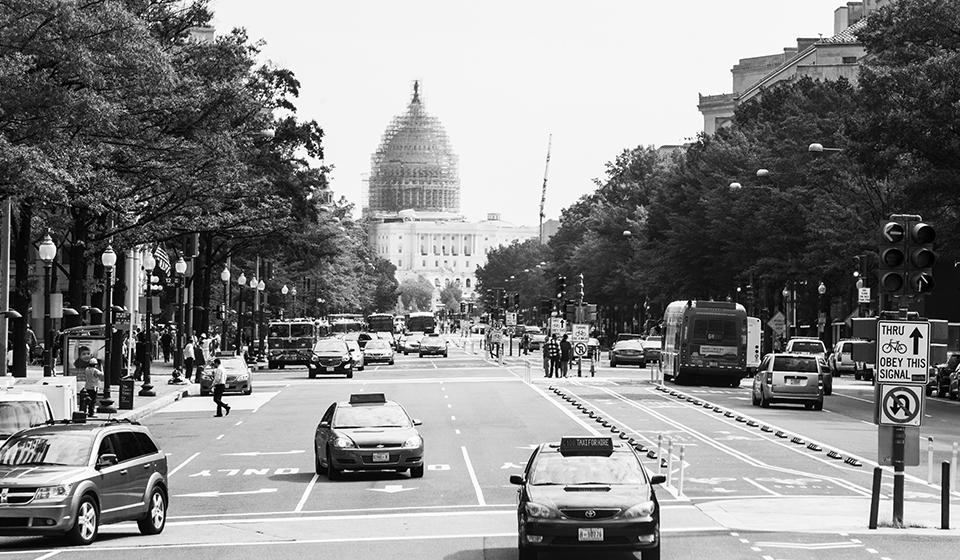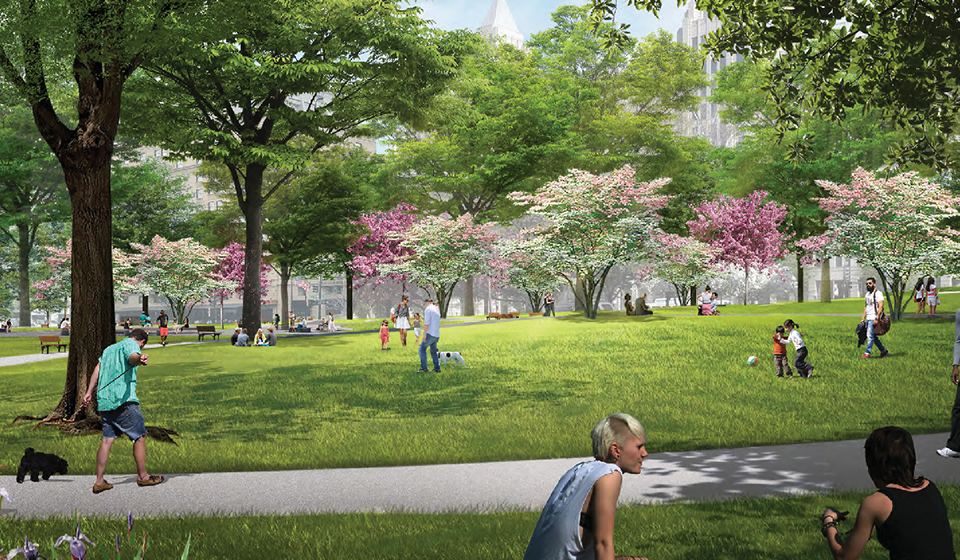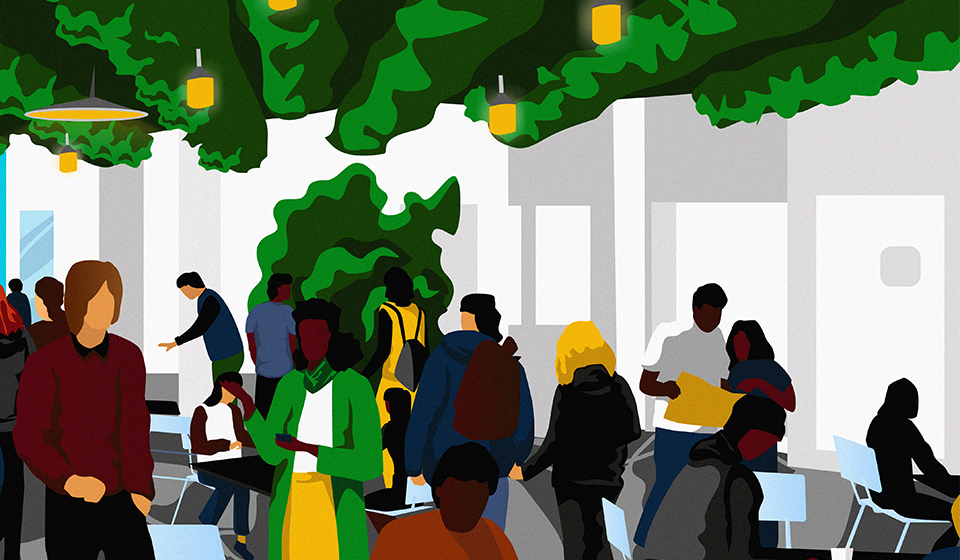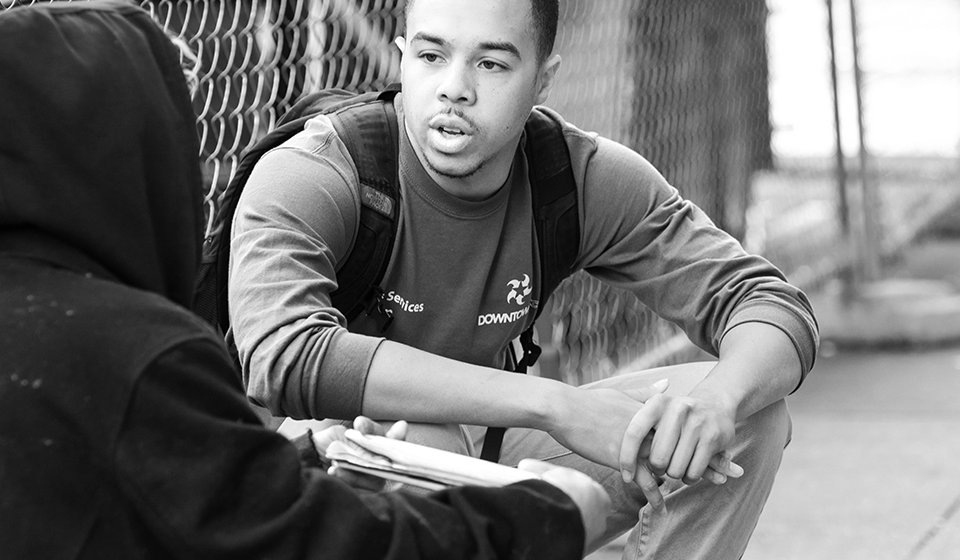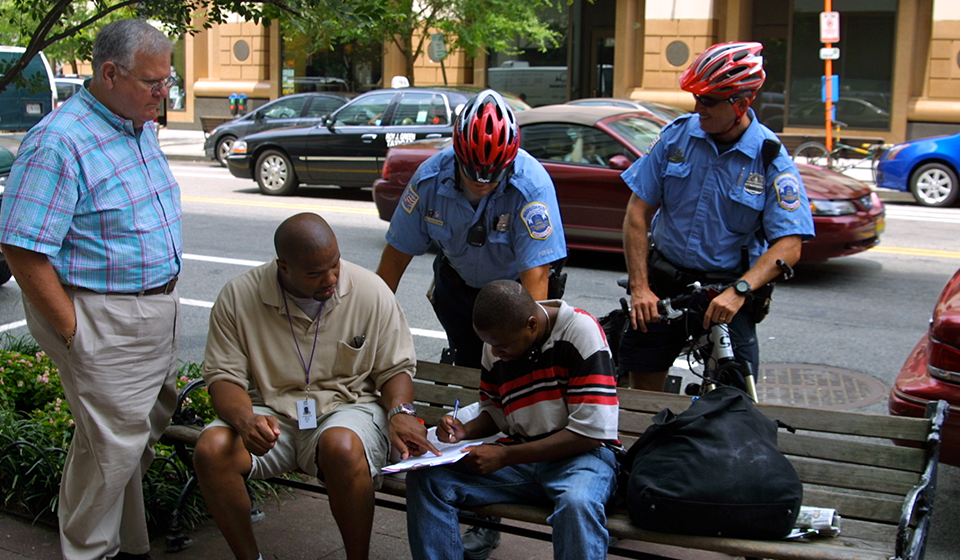DOWNTOWN 2027
VISION FOR THE FUTURE
Overview
Downtown 2027: Vision for the Future is a bold plan created by the DowntownDC Business Improvement District (BID) detailing aspirational goals to be achieved in the next decade and specific actions to achieve these goals. The BID in 2017 is in its 20th year of operation and this plan identifies challenges to downtown’s continued economic prominence and a path forward for the coming decade. The durability of downtown’s competitiveness will depend on the strength of its economy, civil infrastructure and social agenda. The recommendations and initiatives outlined in this document provide direction for achieving success over the next decade.
01
TRANSPORTATION

02
ECONOMY

03
PUBLIC REALM

04
HUMAN SERVICES

VISION FOR THE FUTURE
Downtown 2027
Transportation
Downtown’s location at the center of the region’s transit network is a tremendous asset, offering access to the broadest possible portion of the regional labor market. Downtown’s central location provides several key advantages: proximity to key institutions, access to the core of the Metrorail system, strong infrastructure connections to the rest of the city and suburbs and a walkable grid of streets inherited from previous planning.
TRANSPORTATION
Recommendations
AND INITIATIVES
Get WMATA on track:
Improve Metrorail service reliability, rebuild Metro’s operational and safety culture, restore late-night service, and establish a regional dedicated funding source.
01
02
Prioritize surface transit: Build the K Street Transitway, improve coordination and infrastructure investments.
Speed up bus operation: Redesign the District’s bus network to emphasize all-day, high-frequency service and change fare payment systems.
03
04
Rethink streets:
Reduce on-street parking and create a more efficient schedule and system for delivery trucks and motor coaches.
Reduce traffic congestion:
Expand upon current and implement new travel demand pricing strategies to incentivize behavior change that results in traffic reduction.
05
TRANSPORTATION
Recommendations
AND INITIATIVES
01
Get WMATA on track:
Improve Metrorail service reliability, rebuild Metro’s operational and safety culture, restore late-night service, and establish a regional dedicated funding source.
02
Prioritize surface transit: Build the K Street Transitway, improve coordination and infrastructure investments.
03
Speed up bus operation: Redesign the District’s bus network to emphasize all-day, high-frequency service and change fare payment systems.
04
Rethink streets:
Reduce on-street parking and create a more efficient schedule and system for delivery trucks and motor coaches.
05
Reduce traffic congestion:
Expand upon current and implement new travel demand pricing strategies to incentivize behavior change that results in traffic reduction.
Economy
Downtown in 2017 is the largest job center in the region with a diverse mix of uses. It is home to 186,000 jobs, 11,000 hotel rooms, 160 destination restaurants, 66 destination stores (totaling 740,000 square feet), 10 museums, eight performing arts venues, two cinemas and one sports arena. These destinations sit within a compact, walkable, dense urban environment.
ECONOMY
Recommendations
AND INITIATIVES
01
Office to residential conversion:
Implement an incentive program to encourage residential redevelopment of 400,000 square feet (SF) of outdated office buildings.
Support major redevelopment projects:
Support timely redevelopment of the headquarters buildings for the FBI, WMATA and Department of Labor, the Metropolitan Police Department’s Daly Building, Federal City Shelter and Union Stati
02
03
Create a regional shopping destination:
Grow Downtown destination shopping from 740,000 SF to 1.2 million SF, including developing an exceptional public realm and a marketing strategy for downtown shopping.
Support culture and entertainment:
Keep the Capital One Arena downtown, incorporate cultural and entertainment uses into several redevelopment projects, and restore late-night Metrorail service.
04
ECONOMY
Recommendations
AND INITIATIVES
01
Office to residential conversion:
Implement an incentive program to encourage residential redevelopment of 400,000 square feet (SF) of outdated office buildings.
02
Support major redevelopment projects:
Support timely redevelopment of the headquarters buildings for the FBI, WMATA and Department of Labor, the Metropolitan Police Department’s Daly Building, Federal City Shelter and Union Stati
03
Create a regional shopping destination:
Grow Downtown destination shopping from 740,000 SF to 1.2 million SF, including developing an exceptional public realm and a marketing strategy for downtown shopping.
04
Support culture and entertainment:
Keep the Capital One Arena downtown, incorporate cultural and entertainment uses into several redevelopment projects, and restore late-night Metrorail service.
Public Realm
Public realm is a term that is inclusive of several other terms: public right of way, parks, public space, open space, green space and more. The public realm and the built environment create a sense of place for workers, visitors and residents. A strong, positive sense of place is a competitive advantage for attracting and maintaining investment in an area.
PUBLIC REALM
Recommendations
AND INITIATIVES
01
Transfer jurisdiction of parks:
Work with congress and the D.C. government to transfer parks and reservations to the city.
Renovate and activate public spaces:
Program and manage parks and public spaces in partnership with the National Park Service, the BID and the D.C. government.
02
03
Establish a BID-affiliated nonprofit:
Establish a nonprofit to fundraise for an enhanced downtown public realm.
Redesign Pennsylvania Avenue:
Create a 21st century design with federal partners to create a vibrant, active corridor attracting retail.
04
PUBLIC REALM
Recommendations
AND INITIATIVES
01
Transfer jurisdiction of parks:
Work with congress and the D.C. government to transfer parks and reservations to the city.
02
Renovate and activate public spaces:
Program and manage parks and public spaces in partnership with the National Park Service, the BID and the D.C. government.
03
Establish a BID-affiliated nonprofit:
Establish a nonprofit to fundraise for an enhanced downtown public realm.
04
Redesign Pennsylvania Avenue:
Create a 21st century design with federal partners to create a vibrant, active corridor attracting retail.
Human Services
Homelessness is a significant concern for downtown and the region in 2017. According to the 2016 U.S. Department of Housing and Urban Development Point in Time count, there were 12,215 homeless individuals in the Washington, DC Metropolitan Area. Of those, 318 were unsheltered and living on the streets. According to the BID’s own point in time count in 2016, 126 individuals were living on the streets within its geographic area. Nearly half of individuals experiencing homelessness in the District suffer from mental illness, substance abuse, a co-occurring disorder or other chronic health/disability issues which makes the problem even more challenging.
HUMAN SERVICES
Recommendations
AND INITIATIVES
01
Expand permanent supportive housing:
Expand the number of permanent supportive housing units available to people experiencing homelessness in downtown.
Redevelop CCNV:
Build partnerships to redevelop the site of the Community for Creative Non-Violence and provide better housing solutions and services for residents.
02
03
Reestablish daytime services:
Work with governmental and non-profit partners to establish and implement effective social services for people experiencing homelessness.
Accelerate transfers to housing:
Reduce the average timeframe to get individuals experiencing homelessness in downtown into permanent supportive housing.
04
HUMAN SERVICES
Recommendations
AND INITIATIVES
01
Expand permanent supportive housing:
Expand the number of permanent supportive housing units available to people experiencing homelessness in downtown.
02
Redevelop CCNV:
Build partnerships to redevelop the site of the Community for Creative Non-Violence and provide better housing solutions and services for residents.
03
Reestablish daytime services:
Work with governmental and non-profit partners to establish and implement effective social services for people experiencing homelessness.
04
Accelerate transfers to housing:
Reduce the average timeframe to get individuals experiencing homelessness in downtown into permanent supportive housing.
Conclusions
Downtown’s growth over the next ten years will be measured not only quantitatively but qualitatively. Increased resiliency, efficiency and innovation will accrue from growing sustainably. Those attributes will make it possible to overcome current limitations to downtown’s growth and meet the new challenges that an ever-changing world presents. Downtown cannot afford to stand still while the city and the region further evolve.







